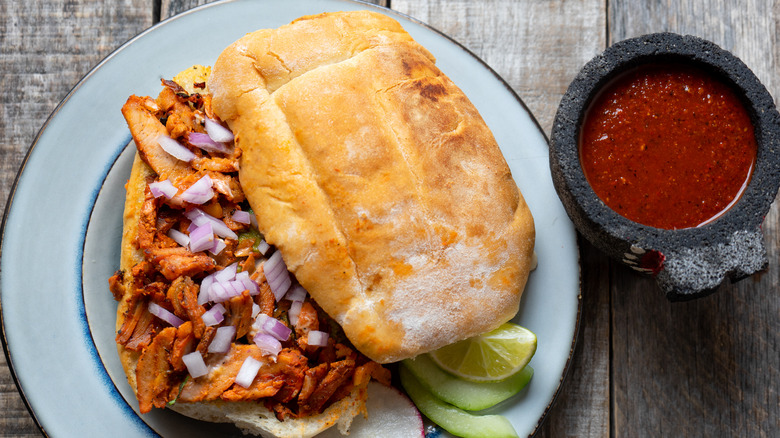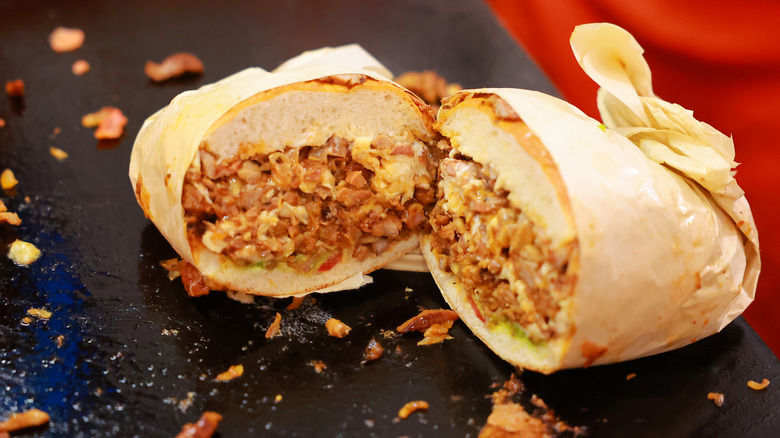The Multicultural Origins Of The Torta Sandwich
If you go looking for torta recipes online, you're likely to find quite a variety. These range from Italian cakes such as the flourless chocolate torta Caprese to savory Italian pies like the torta rustica as well as Mexican desserts including the almond-flavored torta de cielo and rum-soaked torta borracha. If you're a food truck habitué, however, the torta you're probably most familiar with is a kind of Mexican sandwich that, like many other types of Mexican food, shows influences from other cultures that have colonized this now-independent nation.
The torta sandwich as we now know it is a product of Puebla, a part of Mexico that was once under French control. In fact, the Battle of Puebla (which was famously fought on the 5th of May) was fought to shake off the French yoke, albeit temporarily. For this reason, tortas, as well as anything made with that famous Pueblan condiment mole poblano, are a dish well-suited to any Cinco de Mayo celebration.
The French influence is seen in the bread
What sets tortas apart from many other Mexican food truck favorites is the fact that the filling is sandwiched between two sides of a bread bun — this stands in contrast to the corn or flour tortillas used in dishes such as tacos, burritos, and enchiladas. Tortillas, which are one of the world's most popular flatbreads, date back to ancient times, but yeast breads arrived in Mexico with the French Intervention of the mid-19th century.
Some of the earliest tortas may have involved taking French-style baguettes and stuffing them with whatever sandwich fillings were available. Today's tortas may also be made with baguettes, but softer, smaller bolillo or telera rolls are more common. If you'd like to try your hand at a homemade torta (here's a recipe to get you started), kaiser or sub rolls will also work just fine.
As for the fillings, these don't necessarily show much of a French influence, unless you count ham and cheese. You might also find tortas similar to Cuban sandwiches, Philly cheese steaks, or even ham, mozzarella, and pineapple tortas reminiscent of Hawaiian pizza. You can also find some interesting mashups like the torta tamalona, which involves taking a couple of tamales (de-husked, one hopes) and sticking them between two buns. For the most part, thick bread rolls stand up to even these sloppier fillings. However, the salsa-smothered Guadalajaran torta ahogada, whose name literally means "drowned," is only for squishy sandwich fans.

